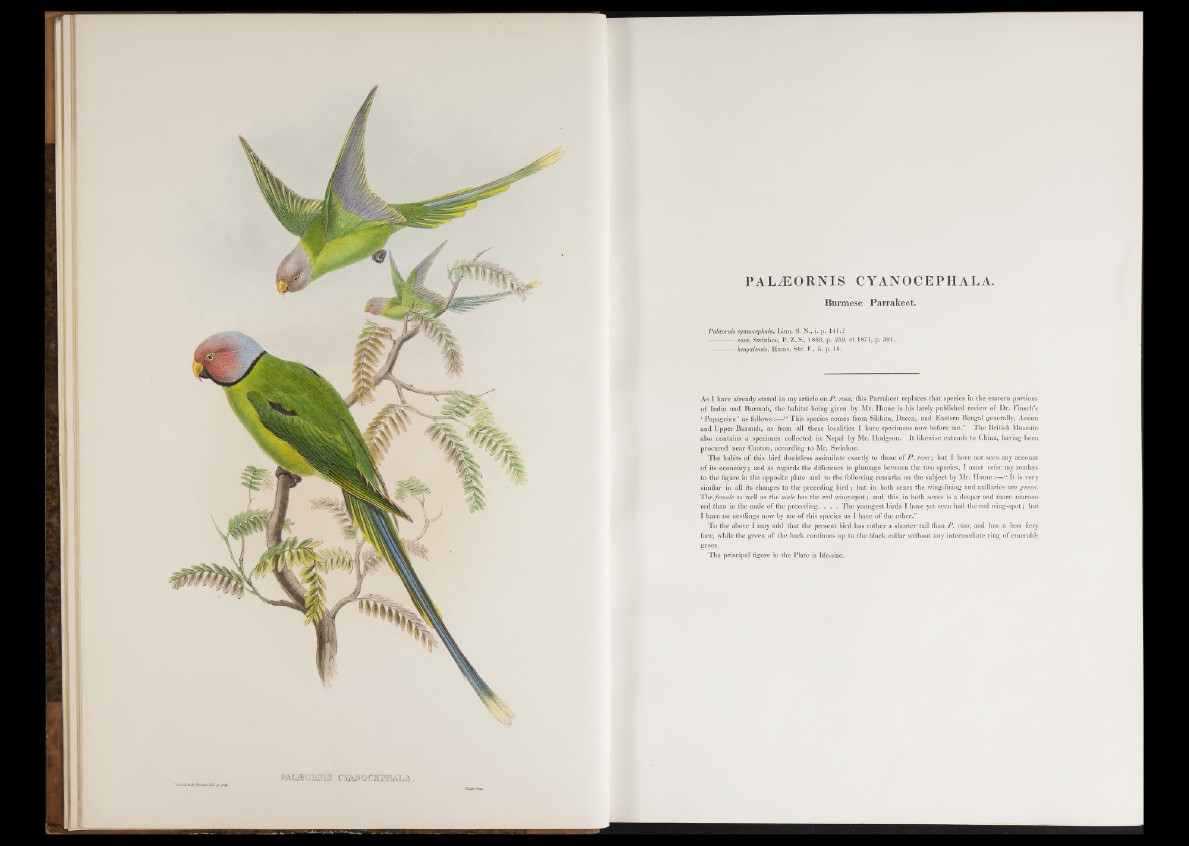
fmu&Z &SC.IhcJt&r del et' lufl/
B O Æ O M S mTATmCKTPmXA .
fKdlerJmp.
PALÆORNIS CYANOCEPHALA.
Burmese Parrakeet.
Pdlaornis cyanocephala, Linn. S. N., i. p. 141. ?
-------------rosa, Swinhoe, P. Z. S., 1863, p. 259, et 1871, p. 391.
bengalensis, Hume, Str. F., ii. p. 16.
As I have already stated in my article on P . rosa, this Parrakeet replaces that species in the eastern portions
o f India and Burmab, the habitat being given by Mr. Hume in his lately published review of Dr. Finsch’s
‘ Papageien’ as follows :—“ This species comes from Sikkim, Dacca, and Eastern Bengal generally, Assam
and Upper Burmah, as from all these localities I have specimens now before me.” The British Museum
also contains a specimen collected in Nepal by Mr. Hodgson. It likewise extends to China, having been
procured near Canton, according to Mr. Swinhoe.
The habits of this bird doubtless assimilate exactly to those of P . rosa; but I have not seen any account
of its economy; and as regards the difference in plumage between the two species, I must refer my readers
to the figure in the opposite plate and to the following remarks on the subject by Mr. Hume:—“ It is very
similar in all its changes to the preceding bird ; but in both sexes the wing-lining and axillaries are green.
The female as well as the male has the red wing-spot; and this in both sexes is a deeper and more maroon
red than in the male of the preceding. . . . The youngest birds I have yet seen had the red wing-spot; but
I have no nestlings now by me of this species as I have of the other.”
To the above I may add that the present bird has rather a shorter tail than P . rosa, and has a less fiery
face, while the green of the back continues up to the black collar without any intermediate ring of emerald-
green.
The principal figure in the Plate is life-size.